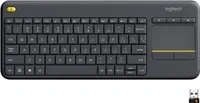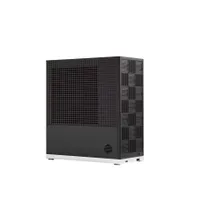I took the Framework Desktop out to my living room — and I can’t believe I’m actually gaming in 4K on an iGPU
This modular, mini PC has one impressive iGPU

From cheaper games to tweaking your settings to get them exactly how you want them, there’s a lot of perks to being a PC gamer. However, being stuck at your desk when your console-wielding counterparts are sprawled out on the couch in front of their massive TVs isn’t one of them.
Sure, if you have one of the best gaming PCs with a powerful GPU, you could bring your rig out to the living room for some couch gaming — that is if you live by yourself. I used to do just this back when I was on my own but now with a family and a little one at home, having a big bulky gaming desktop under my TV just isn’t feasible.
Not only would doing so put my gaming PC at risk of getting knocked over or damaged, but it would definitely throw off the aesthetics of the living room I’ve spent the last two weekends remodeling. While you can probably convince your significant other that your game console definitely deserves a place in the living room, doing so with your gaming PC is a much harder sell.
As I’ve spent the past few years testing and reviewing the best mini PCs, I’ve also moved away from building and using larger, desktop gaming PCs, especially as graphics card and component prices have skyrocketed in recent years. Much to my surprise though, I’ve been able to play quite a few of the best PC games on some of the mini PCs I’ve tested. However, it wasn’t until I reviewed the Framework Desktop that I told myself this might be the perfect mini PC for a more discrete, yet still quite powerful living room PC.
Here’s what it’s been like using and gaming on the Framework Desktop on a 65-inch TV from the comfort of my couch for the past week and why a mini PC like this one could easily earn a permanent spot in my entertainment center.
PC building, miniaturized
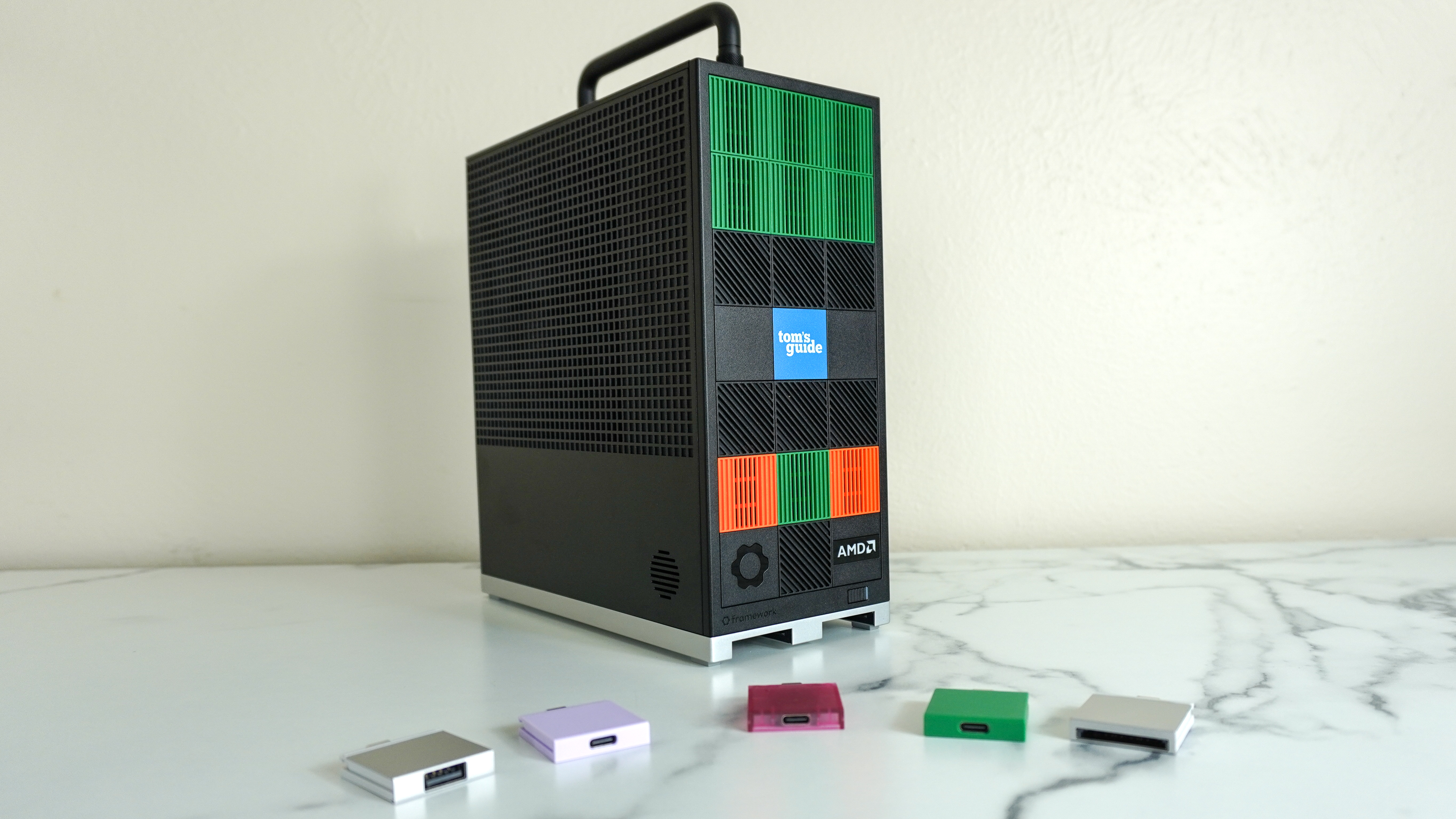
Best known for its repairable and upgradeable laptops, Framework is a company I’ve been following since the release of the first Framework Laptop back in 2021. It wasn’t until the start of this year when the company announced that it would be making a mini PC, though, that my interest was truly piqued.
You see, unlike the rest of the mini PCs I’ve checked out in the past, this one would be modular with upgradeable parts as well as highly customizable.
Get instant access to breaking news, the hottest reviews, great deals and helpful tips.
With multiple side panel options available and a unique front panel with slots for 21 different tiles, you can really make the Framework Desktop your own. On the front of its case, there are two slots where you can add whatever ports you want from your standard USB-A and USB-C to SD and microSD card readers. thanks to the company’s Expansion Cards which also come in a number of different colors and finishes.
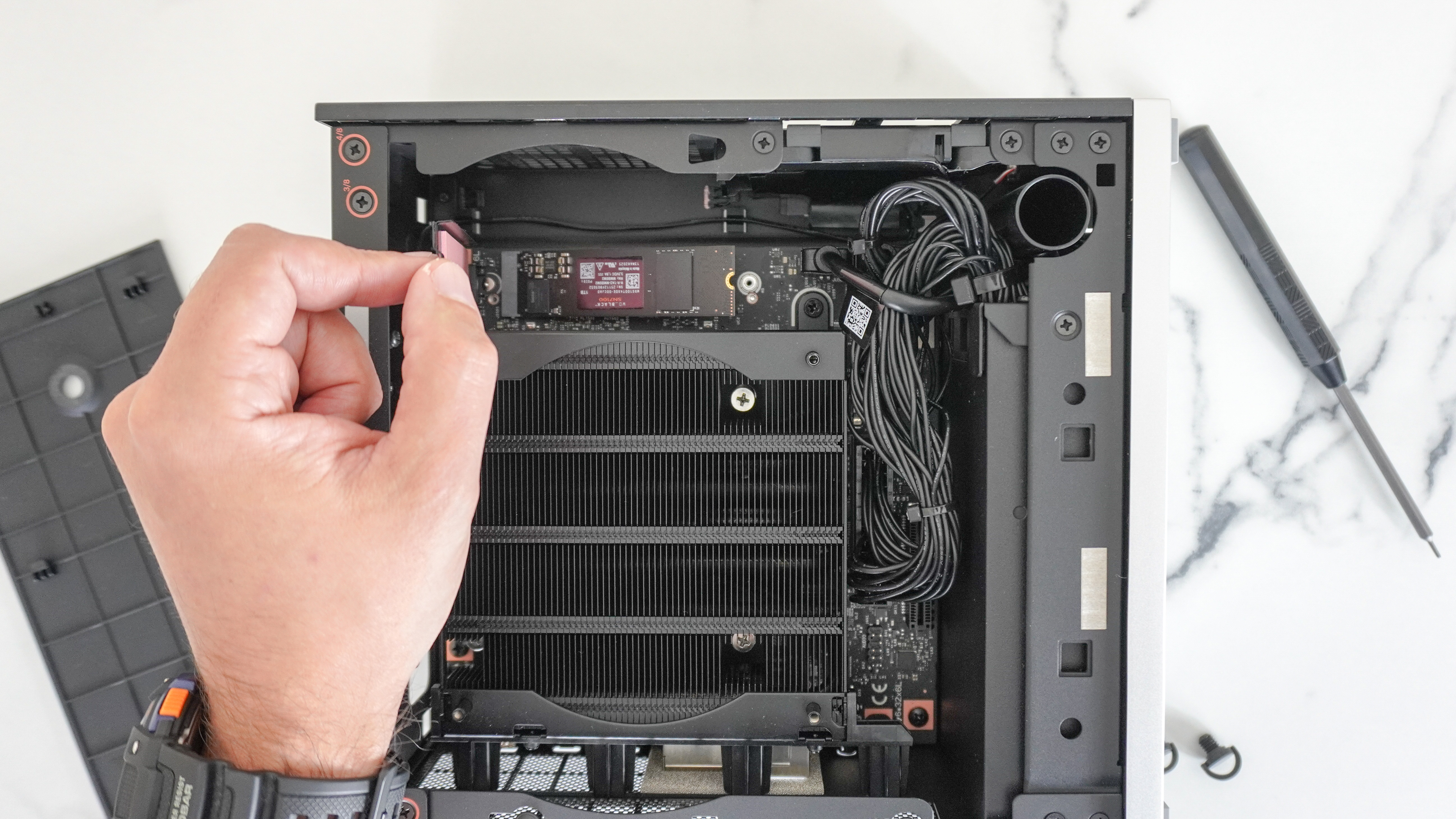
With most mini PCs, I unbox them and then go right to incorporating them into one of my desk setups. With the Framework Desktop though, I had to build it first. Besides being a lot of fun and taking me back to my PC building days, this was also incredibly easy.
Framework takes all of the guesswork out of building a PC by pre-installing the motherboard, CPU and RAM. All you need to do on your end is to install your storage and the CPU fan, close everything up and you’re ready to go.
You do need to install your own operating system with both Windows and Linux supported right out of the box. As I’m not quite ready to delve back into the world of Linux distros, I went with Windows 11, though for a living room gaming PC, I’m sure something like Bazzite would work like a charm on the Framework Desktop.
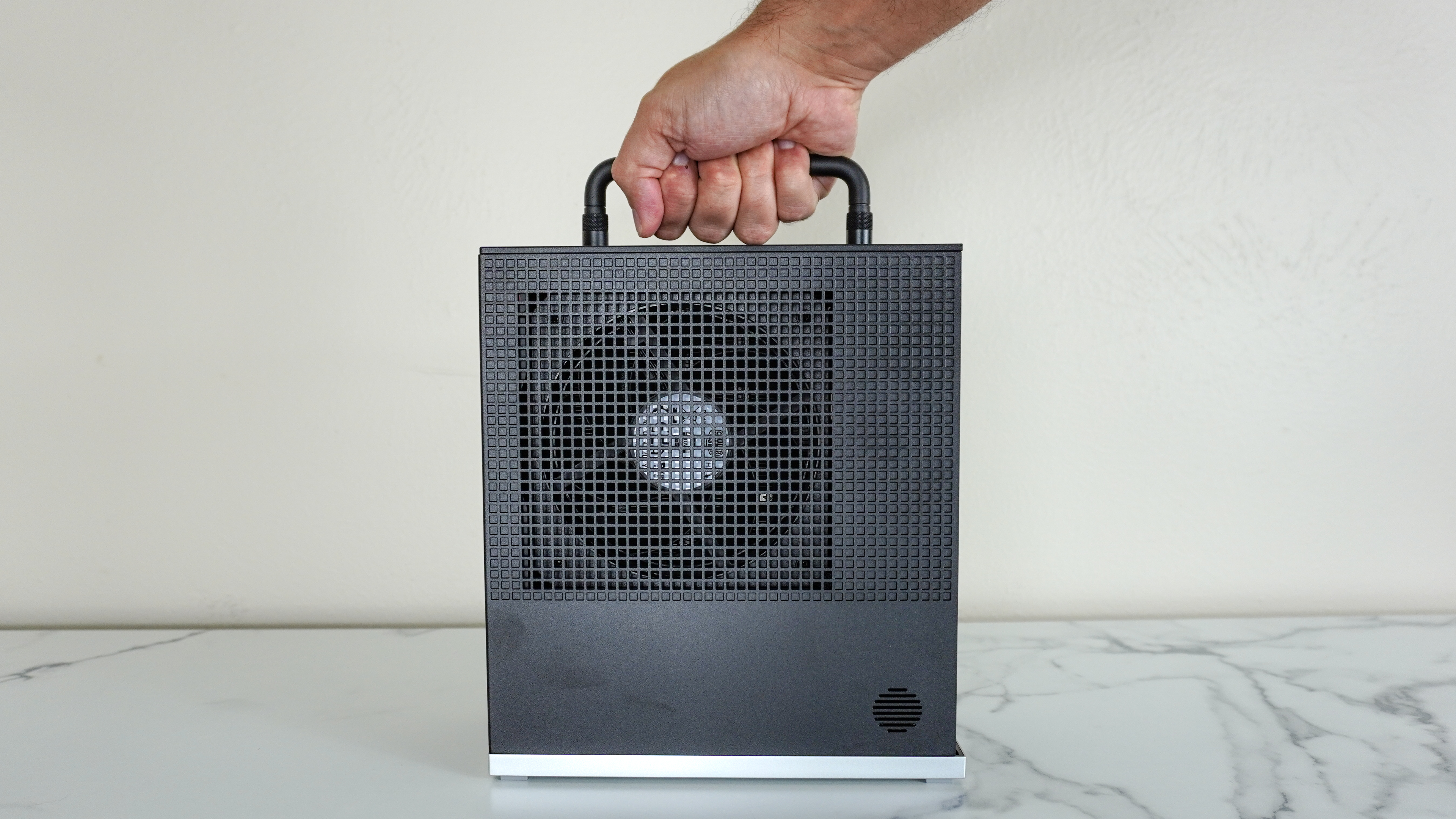
The last thing besides its more compact form factor that makes the Framework Desktop perfect for moving between rooms or even taking it with you on the go is the optional carrying handle. This one is still in the works and will likely be finalized soon but Framework sent over a prototype with my review unit for me to test out.
Back to the couch in style
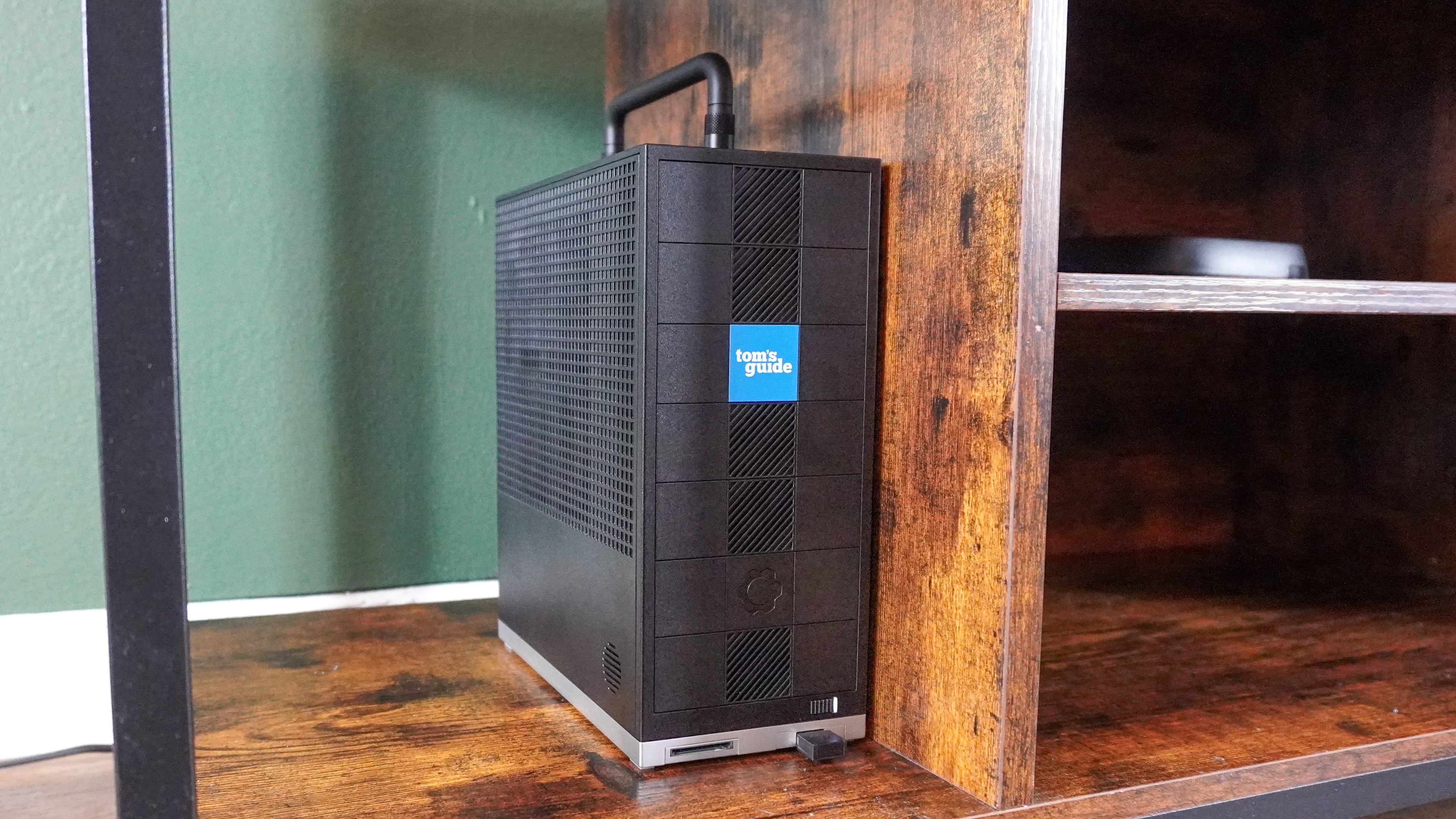
With a completely empty room, it’s very easy to see all the potential possibilities before you start bringing your furniture back in. I originally picked up this entertainment center due to the fact that there was enough space on either side to fit a PS5 or Xbox Series X.
After dealing with overheating issues from my own Xbox Series X not having enough room for good ventilation though, I started thinking about putting a mini PC there instead. As it turns out, there’s more than enough space for the Framework Desktop there and airflow isn’t an issue at all, since all of the hot air from my review unit’s AMD Ryzen AI Max+ 395 CPU is expelled out of the side instead of from the top.
Another thing that I really like about the Framework Desktop is that it uses a standard PC power cable. They’re readily available and, best of all, very inexpensive so picking up an extra one won’t be an issue at all. As I have a few on hand from various PCs I built over the years, I could leave one plugged in here and have another at my desk to easily move the Framework Desktop from my office out to the living room in a pinch.
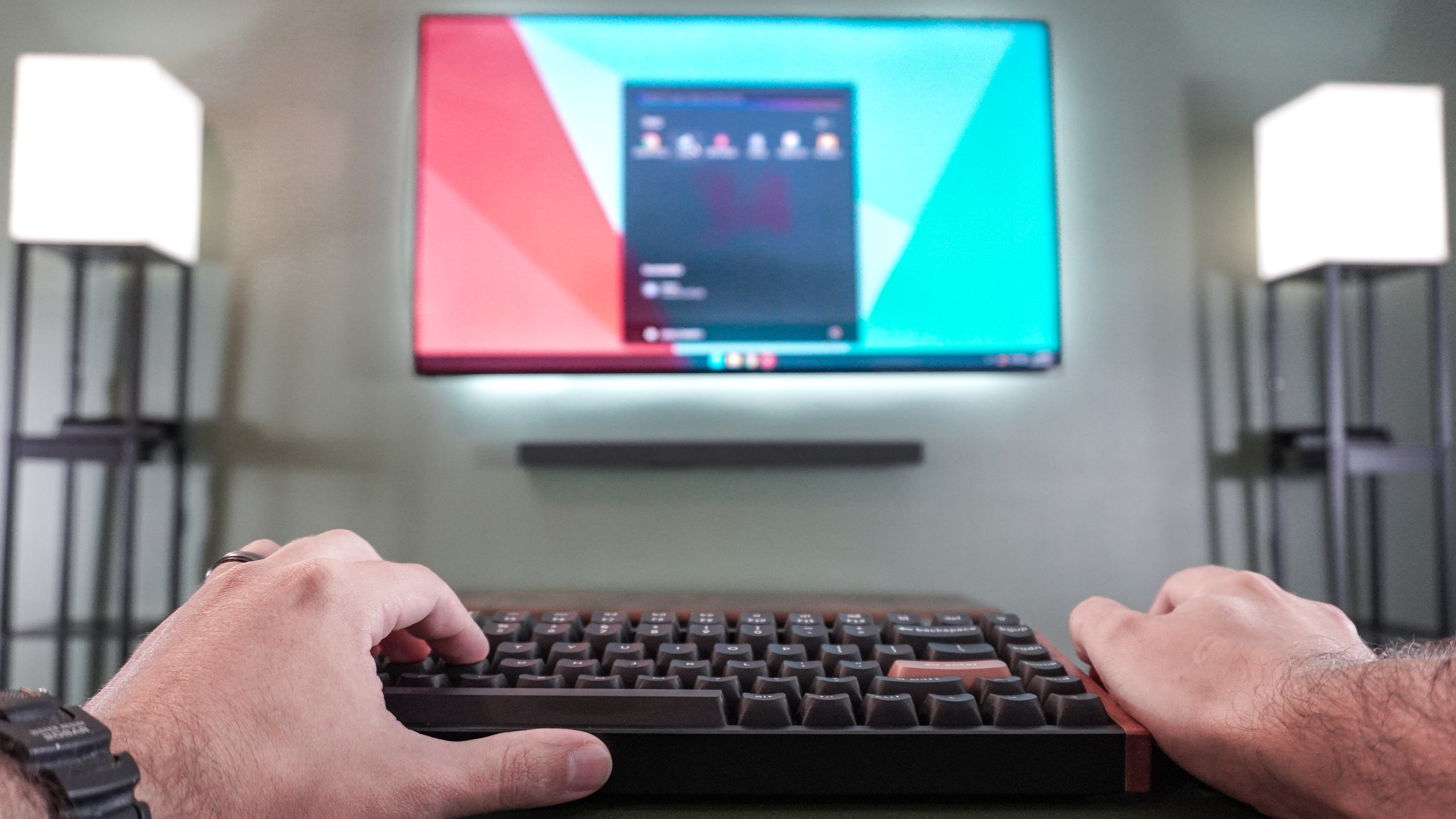
With a living room PC setup, you’re definitely going to need one of the best keyboards and a wireless mouse for downloading updates, opening games and browsing the web. While I always used to have a Logitech K400 and later a Logitech K400 Plus wireless keyboard with built-in trackpad at the ready for using my PC in the living room, this time around I wanted to do things differently.
Given the more refined look we’re going for with our remodeled living room, I decided to use the Keychron K2 HE wireless mechanical keyboard with magnetic Hall Effect switches I recently picked up, as I love its rosewood side panels. Given that I wanted to play games on the Framework Desktop with one of the best PC game controllers, I’m using a mini trackball mouse from Elecom alongside it.
After changing the Framework Desktop’s resolution to match that of my TV, it was time to put it to the test with a few more demanding games that I’ve struggled to run well on some of the other mini PCs. Fortunately though, thanks to AMD’s Radeon Super Resolution feature and its game-boosting FSR tech, things worked out even better than I had expected they would.
There isn’t a keyboard that’s more convenient for using your PC from the couch than the Logitech K400 Plus. This wireless keyboard features media keys along the top and a trackpad on the side, so you don’t need to use a separate mouse for controlling your PC.
Playing is believing
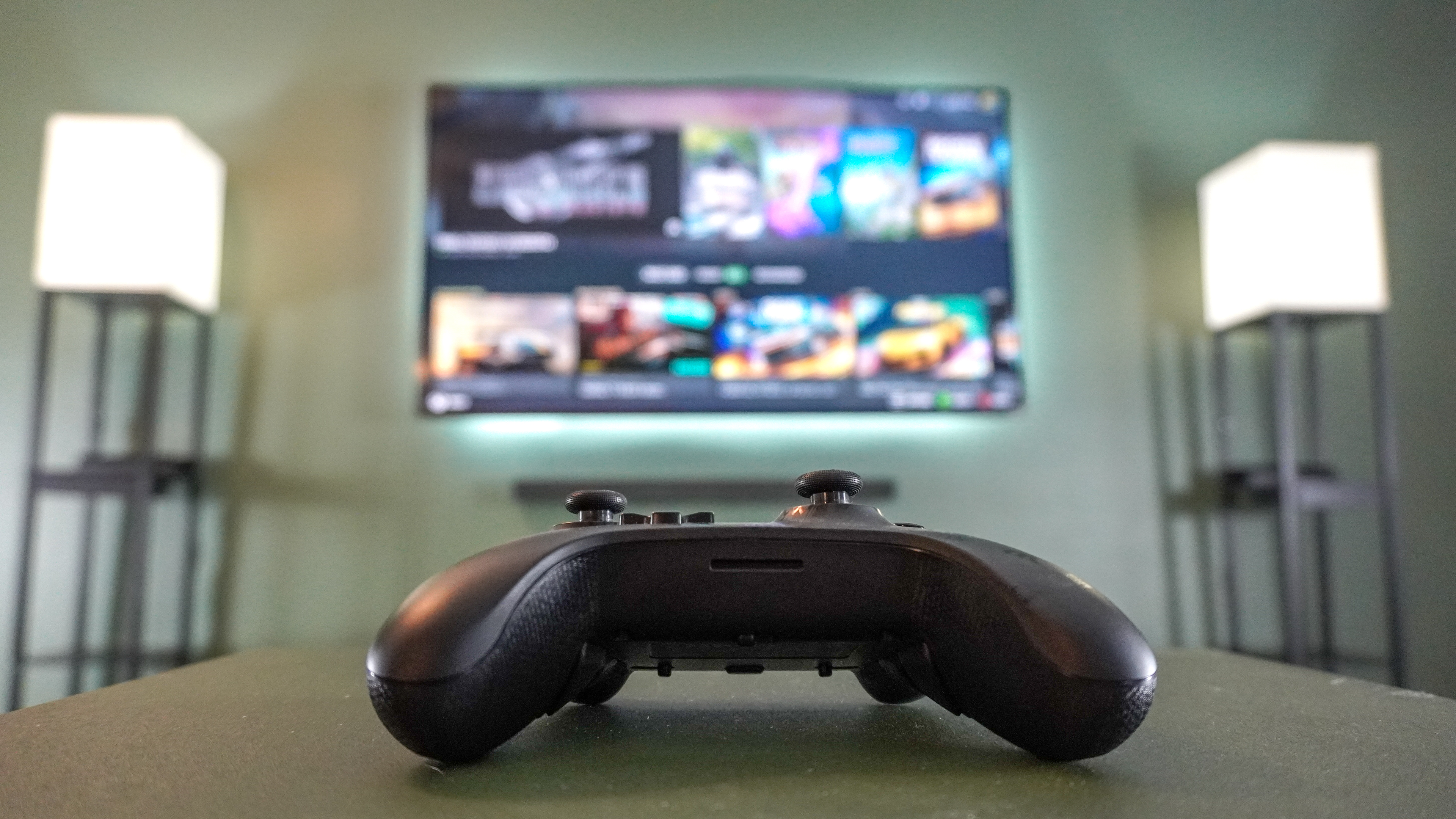
With AMD Ryzen AI Max 385 or an Ryzen AI Max+ 395 and from 32GB to 128GB of LPDDR5x memory, the Framework Desktop is a petite powerhouse capable of handling a variety of workloads from everyday web browsing and office tasks to photo/video editing and even running AI models locally.
While testing it for my review, I was quite impressed with its performance as I used it for work during the day. However, it wasn’t until I dimmed the lights and fired up a few of my favorite games at night that I was blown away.
Unlike some other gaming-focused mini PCs I’ve tested in the past such as the Asus ROG NUC 970 or the AtomMan G7 Ti, the Framework Desktop doesn’t have a discrete GPU. Instead, everything from work to gaming is handled by its APU which combines a CPU and a GPU on a single chip. This helps cut down on costs while also freeing up room inside its case, all while using less power in the process.
Normally with integrated graphics on a mini PC, you’re quite limited as to what sorts of games you can run and what resolutions you can play them at. Typically while playing games on mini PCs, I’ve opted for a lower resolution 1080p monitor over a 4K display like the one in my living room TV. However, after testing some games in my office on the MSI MPG 321URXW QD-OLED 4K gaming monitor, I knew the Framework Desktop was up to the task of playing games on my TV.
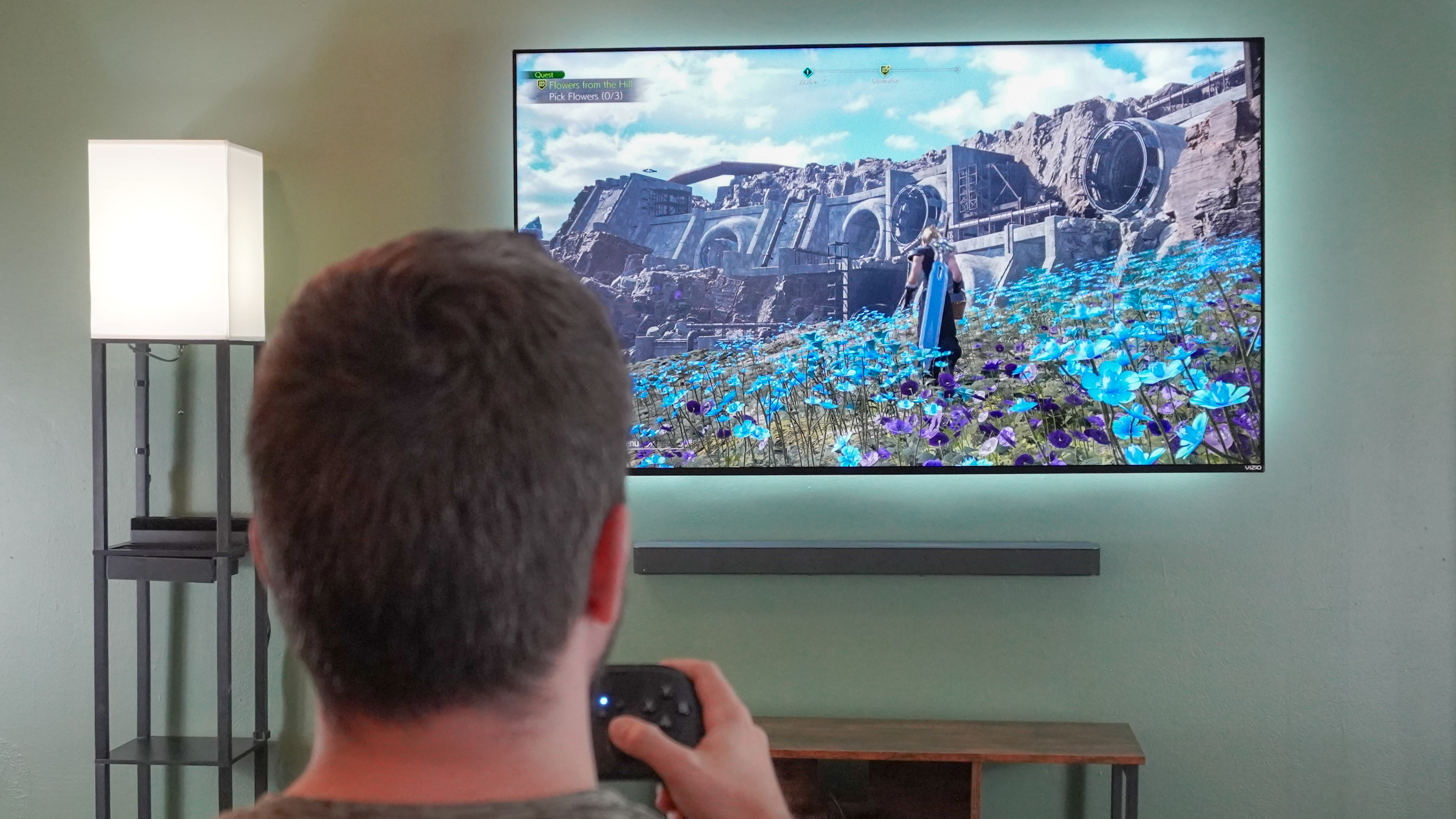
I know some PC gamers might scoff at the idea of using Nvidia’s DLSS or in this case, AMD’s FSR performance and framerate-boosting tech but in this case, it’s the perfect solution. I never would have been able to run more demanding games like Final Fantasy VII Rebirth or Ratchet & Clank: Rift Apart on PC without it.
In both of these titles, I saw smooth and steady frame rates of 60 fps with either it or AMD’s Radeon Super Resolution enabled. And since I was sitting a lot farther back from the screen on my couch, I wasn’t pixel peeping and going over every imperfection. Instead, I was able to kick back and play some PC games almost as effortlessly as I would have on a game console.
Framework Desktop: from $1,099 to $1,999 @ Framework
This modular mini PC is available with either an AMD Ryzen AI Max 385 or Ryzen AI Max+ 395 processor and your choice of 32GB, 64GB or 128GB of RAM. You can choose from a black or a translucent side panel to show off its components along with 21 different colored or custom tiles to give its front panel its own unique look. Keep in mind, you will have to buy storage, a case fan and a license for your operating system of choice separately or alternatively, you can use your own parts.
The best of both
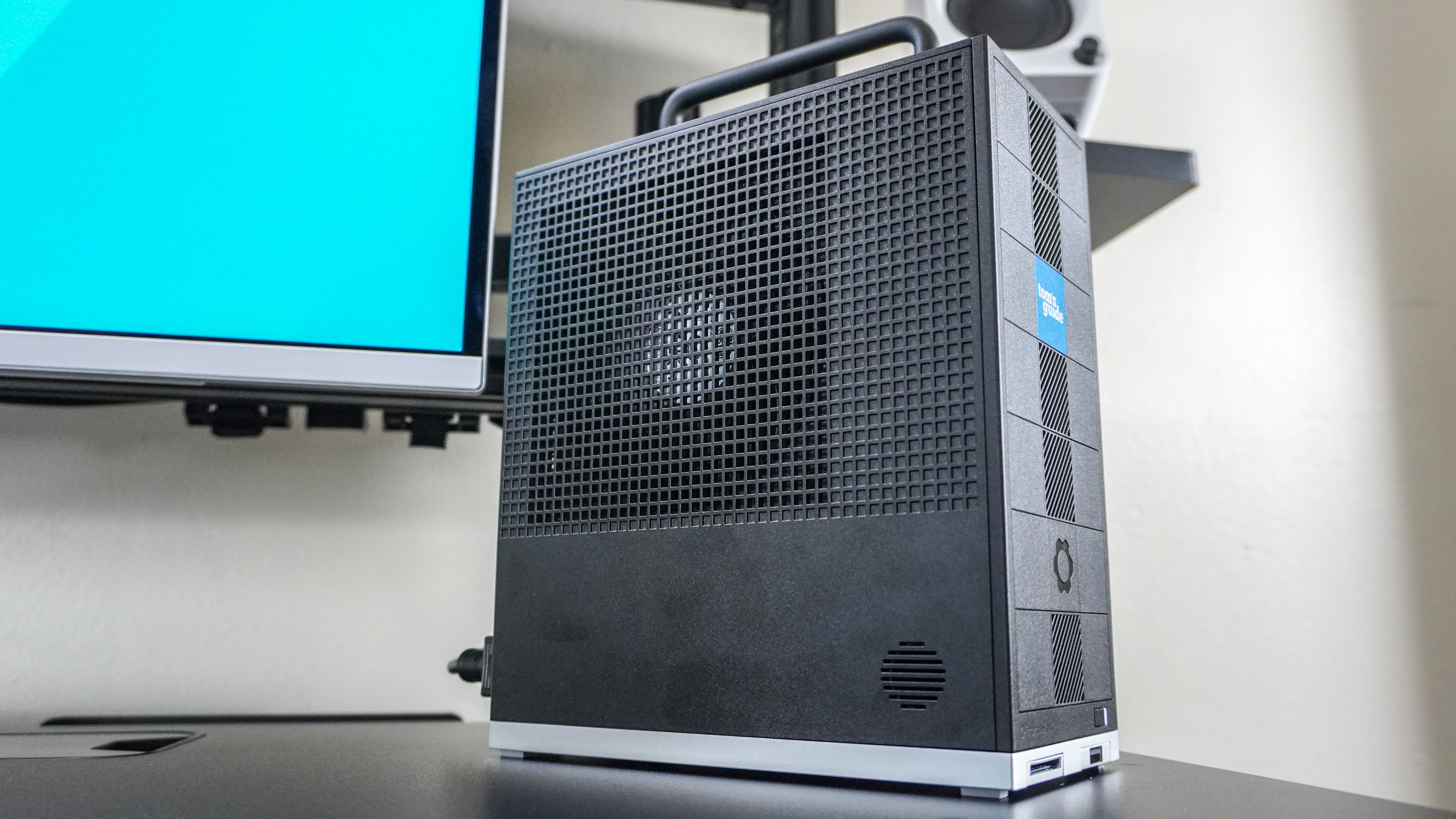
In terms of your initial investment, gaming on a console will always beat a PC. However, with a full-fledged computer, anything’s possible. I’ve worked on the Framework Desktop, edited photos, played games and almost as importantly, I had a really fun time building and customizing it.
As this is a review unit after all, it’s not going to remain a permanent fixture in my living room but even if this was my own PC, I still don’t think it would. Instead, I like the flexibility of using it in my office for work or gaming and then when everyone’s out of the house or asleep for the night, I can easily bring it out to the living room for some big screen gaming.
Likewise, with a starting price of $1,099, the Framework Desktop isn’t exactly a budget mini PC like the Geekom A5 I just reviewed. It’s actually more of a crossover between a standard mini PC and a small form factor (SFF) desktop. While you could likely put together a comparable little gaming PC for around the same price or even less, I really like how Framework has simplified the process of PC building for those who might be hesitant to try doing so out for themselves.
It’s not really that hard after all but with the Framework Desktop, you also get the customization the company is known for and once this mini PC finally becomes readily available (you can preorder one now), I guarantee there will be even more custom tiles, side panels and maybe even alternate carrying handles so that you can truly make it your own.
When I first reached out to Framework about reviewing its first desktop computer, I thought I was just going to see what the company’s modular devices were all about. However, I ended up seeing the full potential of AMD’s latest integrated graphics and given how far they’ve come so far, I really feel like the sky is the limit for what you can pull off without a dedicated GPU.
Follow Tom's Guide on Google News to get our up-to-date news, how-tos, and reviews in your feeds. Make sure to click the Follow button.
More from Tom's Guide
- I ditched my laptop for a pocketable mini PC and a pair of AR glasses — here’s what happened
- The 5 things I'm glad I knew before buying a mini PC
- I didn’t expect this mini PC that looks like a PS5 to be this powerful or customizable — and now I can’t wait to try it out

Anthony Spadafora is the managing editor for security and home office furniture at Tom’s Guide where he covers everything from data breaches to password managers and the best way to cover your whole home or business with Wi-Fi. He also reviews standing desks, office chairs and other home office accessories with a penchant for building desk setups. Before joining the team, Anthony wrote for ITProPortal while living in Korea and later for TechRadar Pro after moving back to the US. Based in Houston, Texas, when he’s not writing Anthony can be found tinkering with PCs and game consoles, managing cables and upgrading his smart home.
You must confirm your public display name before commenting
Please logout and then login again, you will then be prompted to enter your display name.
